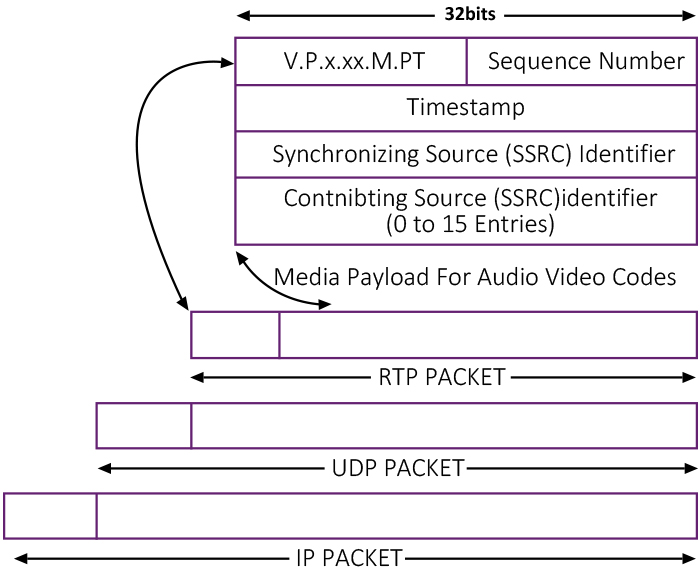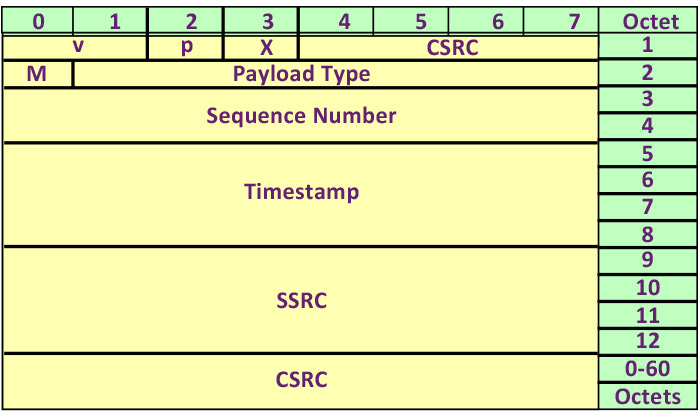What is RTP or Real Time Protocol In Network
In this article, you will examine the RTP or Real-Time Protocol. The real-time RTP protocol is used to carry services whose time latency plays a vital role.
What is RTP or Real-Time Protocol?
The RTP protocol is standard to support real-time audio and video transmission and usually uses the UDP protocol in the transmission layer.
RTP cannot reserve addresses and does not guarantee QoS.
What are the functions of RTP or Real-Time Protocol?
1. Collecting information about the type of media (Media)
2. Gather information about the number of calls
3. Collect information about the identity of the sender
4. Simultaneity
5. Loss detection
6. Shredding information and re-collecting it
7. Security and encryption
You can see how to carry the RTP packet on the network in the figure below.

What is RTP or Real-Time Protocol?

P (Padding): If it is 1, it indicates that the package contains one or more additional octets at the end of the packet and is not part of the payload. The last act of padding shows the number of actions of padding and the information to be omitted. Padding is used when we need constant length data encryption algorithms. In RTCP composite packets, padding acts must be placed at the end of the last packet because, in composite packets, the information is encrypted together.
X: If it is 1, the main header has an additional title with a specified format.
CSRC: Contains ID numbers that are fixed below the header.
M: The frame border is used to specify some events, for example.
Payload Type: Specifies the Payload format and its application type.
Sequence Number: RTP increases one for each packet and resends packets if the information is lost.
Timestamp: This bit is used for synchronization and Jitter calculations and shows the clock pulse accuracy.
SSRC: Specifies the synchronous source. This value is specified randomly.
CSRC: Specifies the list of resources in the Payload contribution that is included in this package.



